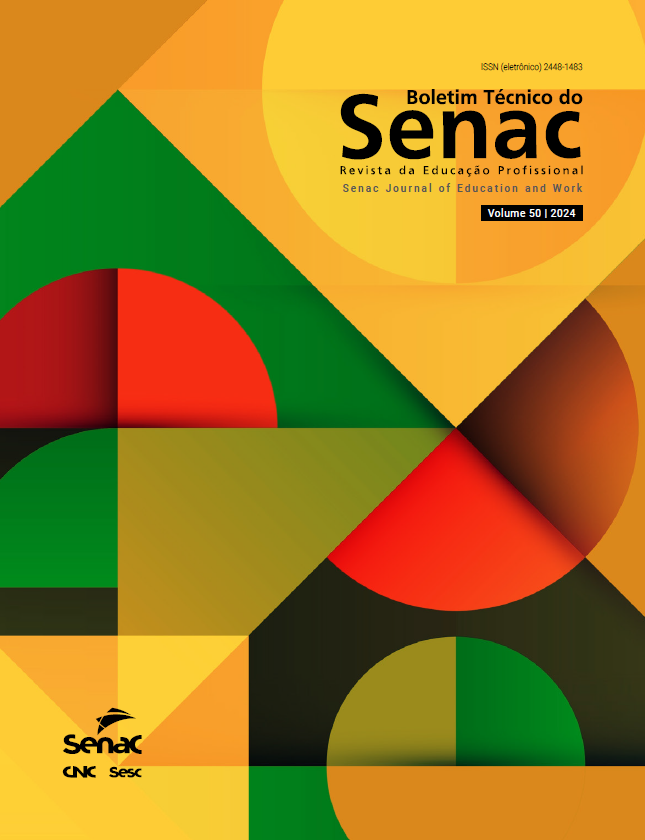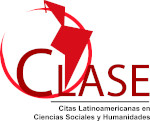Educação permanente como ferramenta para melhorar indicadores de infecção relacionados à assistência à saúde
DOI:
https://doi.org/10.26849/bts.v50.976Abstract
With the objective of evaluating the implementation of continuing health education (EHC) strategies for indicators of hospital-acquired infections (HAIs) in public hospitals, the cross-sectional study was carried out with a professional ICU team, with educational intervention and analysis of pre/post indicators intervention. The EHC carried out with the team tested on improving post-intervention scores. The potential for using collaborative strategies to identify instructions and actions necessary to monitor and contain HAIs is essential for quality care by the multidisciplinary team.
Descriptors: Education, Continuing; Patient Safety; Catheter-Related Infections; Quality of Health Care; Health Education.
Downloads
References
AGÊNCIA NACIONAL DE VIGILÂNCIA SANITÁRIA. Medidas de prevenção de infecção relacionada à assistência à saúde. Brasília, DF: Anvisa, 2017. (Segurança do paciente e qualidade em serviços de saúde).
AGÊNCIA NACIONAL DE VIGILÂNCIA SANITÁRIA. Prevenção de infecções por microrganismos multirresistentes em serviços de saúde. Brasília, DF: Anvisa, 2021. (Segurança do paciente e qualidade em serviços de saúde). Disponível em: https://www.gov.br/anvisa/pt-br/centraisdeconteudo/publicacoes/servicosdesaude/publicacoes/manual-prevencao-de-multirresistentes7.pdf. Acesso em: 27 mar. 2021.
ALLEGRANZI, B. et al. ‘My five moments’: understanding a user-centred approach to hand hygiene improvement within a broader implementation strategy. BMJ Quality & Safety, v. 31, n. 4, p. 259-262, 2022.
ALZYOOD, M. et al. COVID-19 reinforces the importance of handwashing. Journal of Clinical Nursing, v. 29, p. 2760-2761, 2020.
CENTERS FOR DISEASE CONTROL AND PREVENTION. The Core elements of hospital antibiotic stewardship programs: 2019. [S. l.]: Centers for Diseases Control and Prevention, [2019]. Disponível em: https://www.cdc.gov/antibiotic-use/healthcare/pdfs/hospital-core-elements-H.pdf. Acesso em: 11 jul. 2024.
GALVÃO, M. R. S. et al. Incidence density of primary bloodstream infection associated with central venous catheter in Brazil. Research, Society and Development, v. 10, n. 10, 2021.
GIROTI, A. et al. Programas de controle de infecção hospitalar: avaliação de indicadores de estrutura e processo. Revista da Escola da Enfermagem da USP, Ribeirão Preto, v. 52, e03364, 2018.
GORLA, B. C. et al. Intervenção educativa com os profissionais de enfermagem sobre os cuidados e manutenção do cateter venoso central de curta permanência em pacientes adultos críticos. Research, Society and Development, v. 11, n. 11, 2022.
GOULD, D. et al. The problem with ‘My five moments for hand hygiene’. BMJ Quality & Safety, v. 31, n. 4, p. 322-326, 2022.
KARAPANAU, A. et al. Failure of central venous catheter insertion and care bundles in a high central line-associated bloodstream infection rate, high bed occupancy hospital. American Journal of Infection Control, v. 48, n. 7, p. 770-776, 2020.
KASHYAP, R. et al. Effectiveness of a daily rounding checklist on processes of care and outcomes in diverse pediatric Intensive Care Units across the world. Journal of Tropical Pediatric, v. 67, n. 3, fmaa058, 2021.
KATYAL, S. et al. A self-reported survey on the implementation of infection prevention and control elements in Indian hospitals, part of a HAI surveillance network: results from 23 hospitals conducting a standardized IPC assessment. American Journal of Infection Control, v. 51, n. 1, p. 29-34, 2023.
LIMA, Y. C. et al. Contribuições da enfermagem na prevenção de infecções relacionadas ao cateter venoso central em unidades de terapia intensiva: revisão integrativa. Revista Eletrônica Acervo Enfermagem, v. 13, 2021.
MARAN E. et al. Round multiprofissional com checklist: associação com a melhoria na segurança do paciente em terapia intensiva. Revista Gaúcha de Enfermagem, v. 43,
2022.
MOHAPATRA, S. et al. Impact of continuous education and training in reduction of central line-associated bloodstream infection in neurointensive care unit. Indian Journal of Critical Care Medicine, v. 24, n. 6, p. 414–417, 2020.
PACHECO, J. M. S. V.; DIAS, B. F. Infecção de corrente sanguínea relacionada ao manuseio de cateter venoso central em pacientes internados na unidade de terapia intensiva: revisão interativa. Brazilian Journal of Health Review, Curitiba, v. 4, n. 3, p. 11804-11812, 2021.
PEREIRA, A. F. et al. Nurse’s role in managing adverse events related to central venous catheters: integrative review. Research, Society and Development, v. 10, n. 10, 2021.
PURO, V. et al. Pillars for prevention and control of healthcare-associated infections: an italian expert opinion statement. Antimicrobial Resistance & Infection Control, v. 11, n. 1, p. 1-13, 2022.
REZER, F.; FAUSTINO, W. R. Nurses' knowledge of intensive care unit on central venous catheter dressing. Revista Prevenção de Infecção e Saúde, v. 5, 2019.
SÁ, J. D. S. de et al. Segurança do paciente em terapia intensiva: ocorrência de eventos adversos em um hospital público. Research, Society and Development, v. 11, n. 5, e 37811528502, 2022.
SEVERO, T. O. et al. Construção de um bundle para prevenção de infecção de corrente sanguínea associada ao cateter venoso central. Revista Enfermagem Atual In Derme, v. 95, n. 33, 2021.
TOMCZYK, S. et al. The first WHO global survey on infection prevention and control in health-care facilities. The Lancet Infectious Diseases, v. 22, n. 6, p. 845-856, 2022.
WORLD HEALTH ORGANIZATION. 10 facts on patient safety. 2018.
WORLD HEALTH ORGANIZATION. Guidelines on core components of infection prevention and control programmes at the National and Acute Health Care Facility Level. 2016. Disponível em: https://iris.who.int/bitstream/handle/10665/251730/9789241549929-eng.pdf?sequence=1&isAllowed=y. Acesso em: 12 abr. 2023
Downloads
Published
How to Cite
Issue
Section
License

This work is licensed under a Creative Commons Attribution-NonCommercial 4.0 International License.
Commitment to the Provision of Creative Commons Licensing
The Senac Journal of Education and Work is per the BY NC license, free of charge and with no commercial purpose.
In submitting their work for evaluation, the authors undertake to make their work available through the Creative Commons-BY NC license at the website <https://br.creativecommons.org>, thus dispensing with the need for signing any other document or contract with Senac to regulate the availability of their works in the Senac Journal of Education and Work.
The author (s) further declare that they recognize the Senac Journal of Education and Work as an open access journal, whose Policies and Authors Guidelines are available to know on its official website, namely - www.bts .senac.br - and that they can be modified at any time, and immediately any new condition published online.
The names and addresses informed in this journal will be used exclusively for the services provided by this publication and are not available for other purposes or to third parties.



















